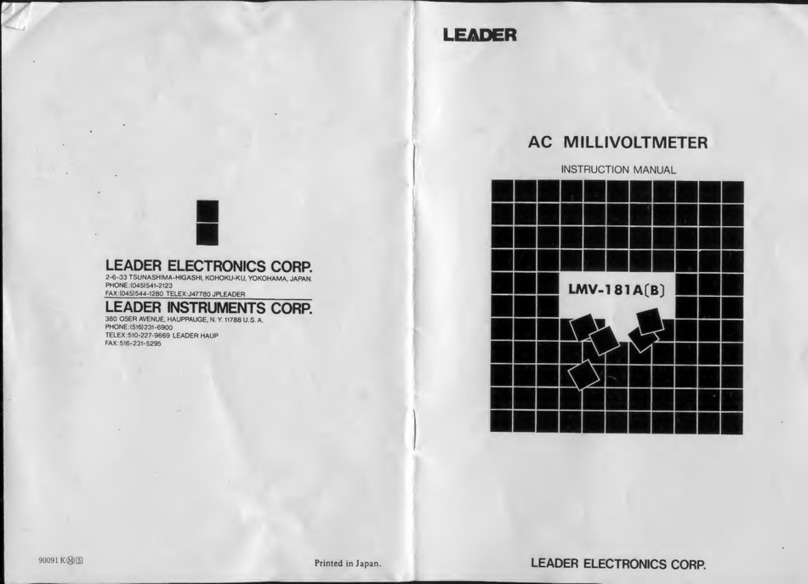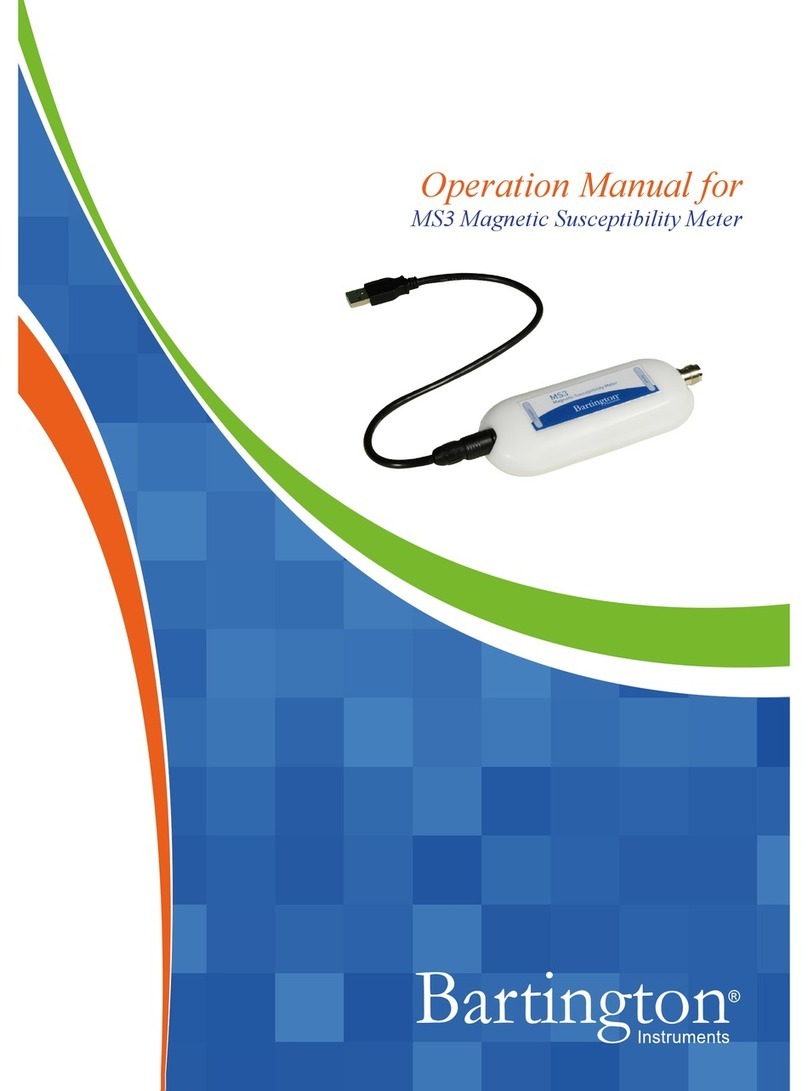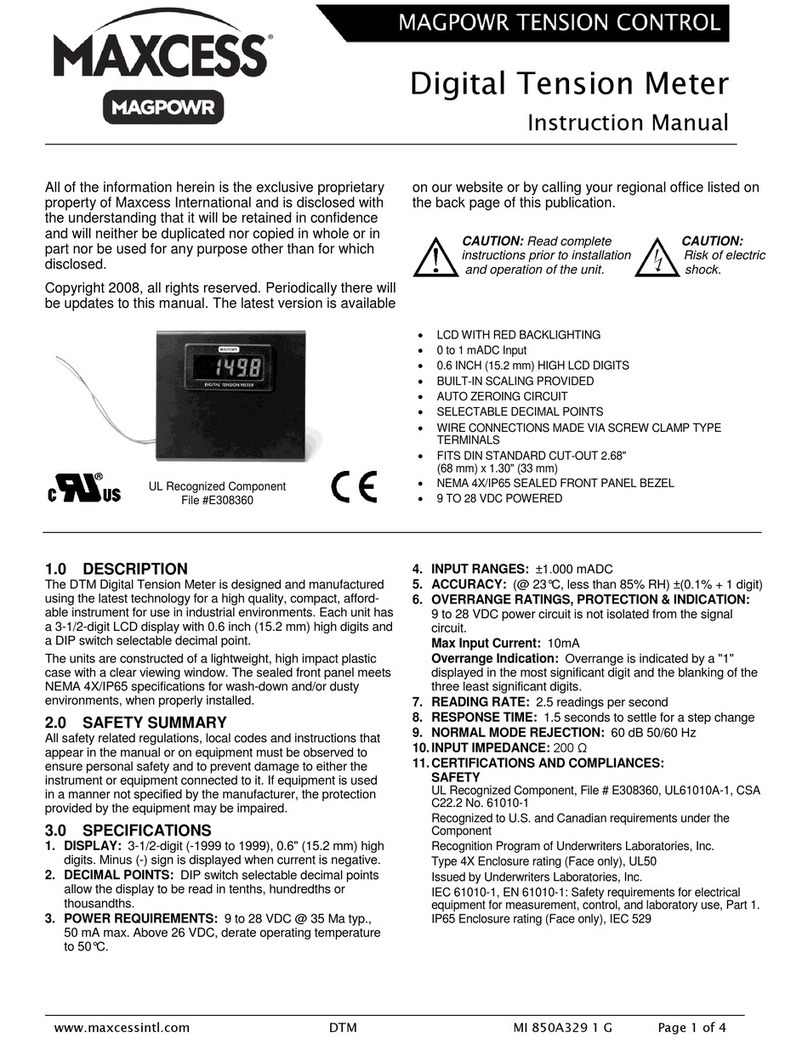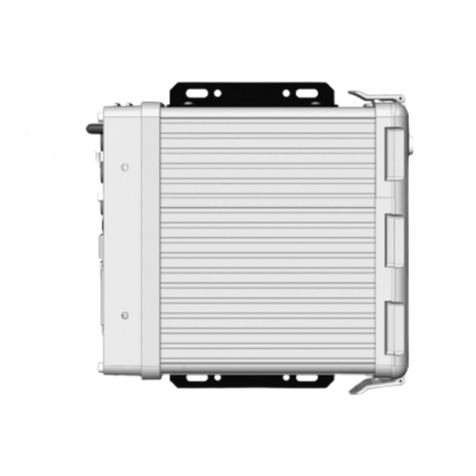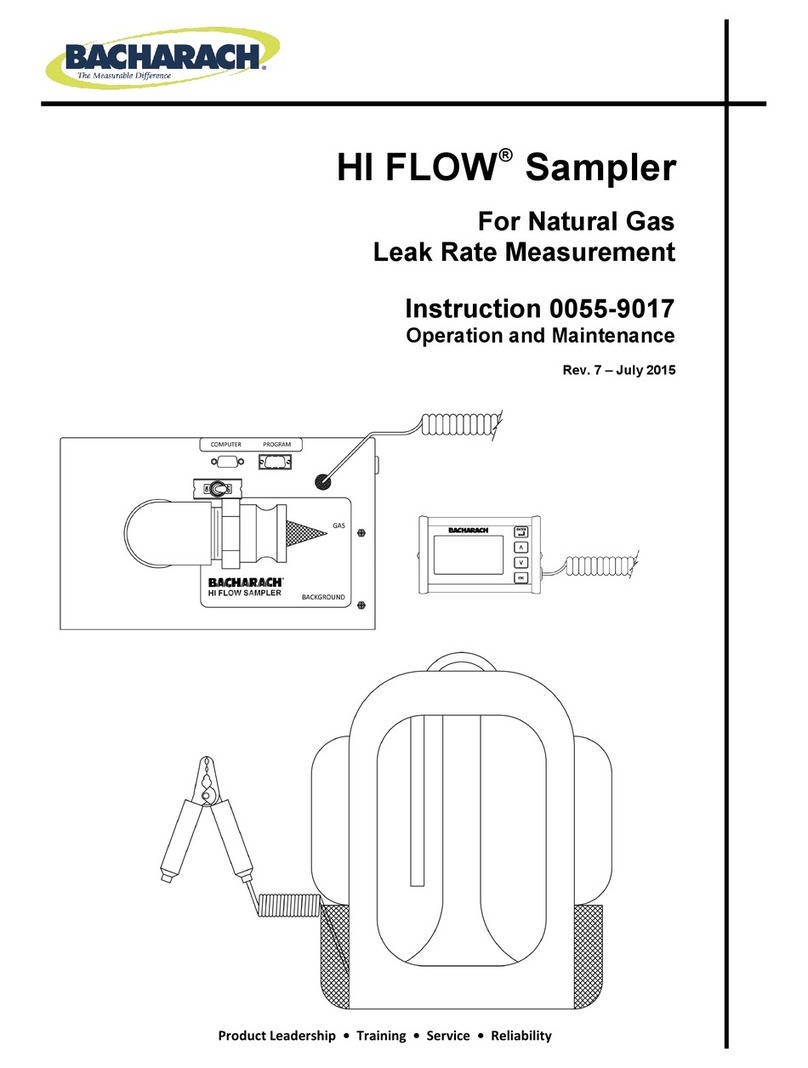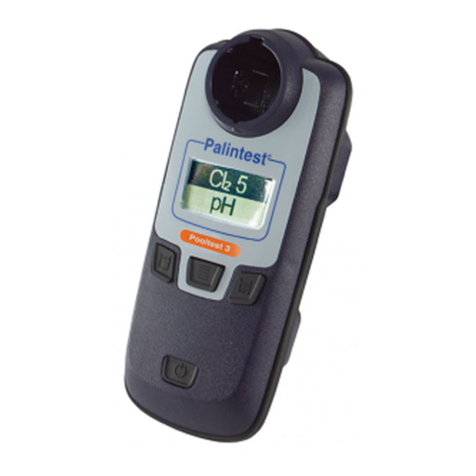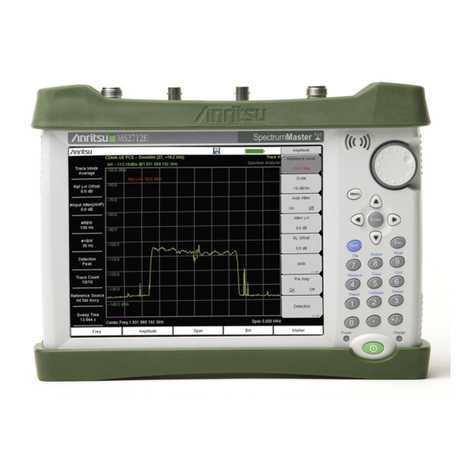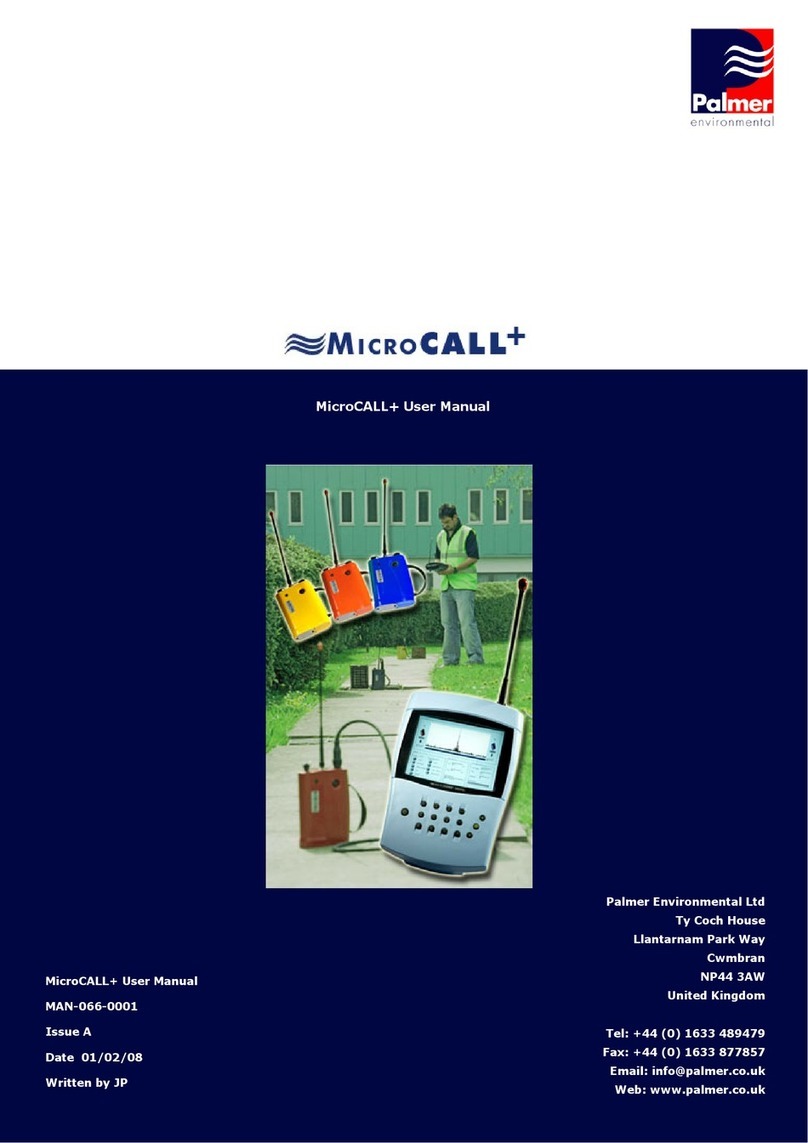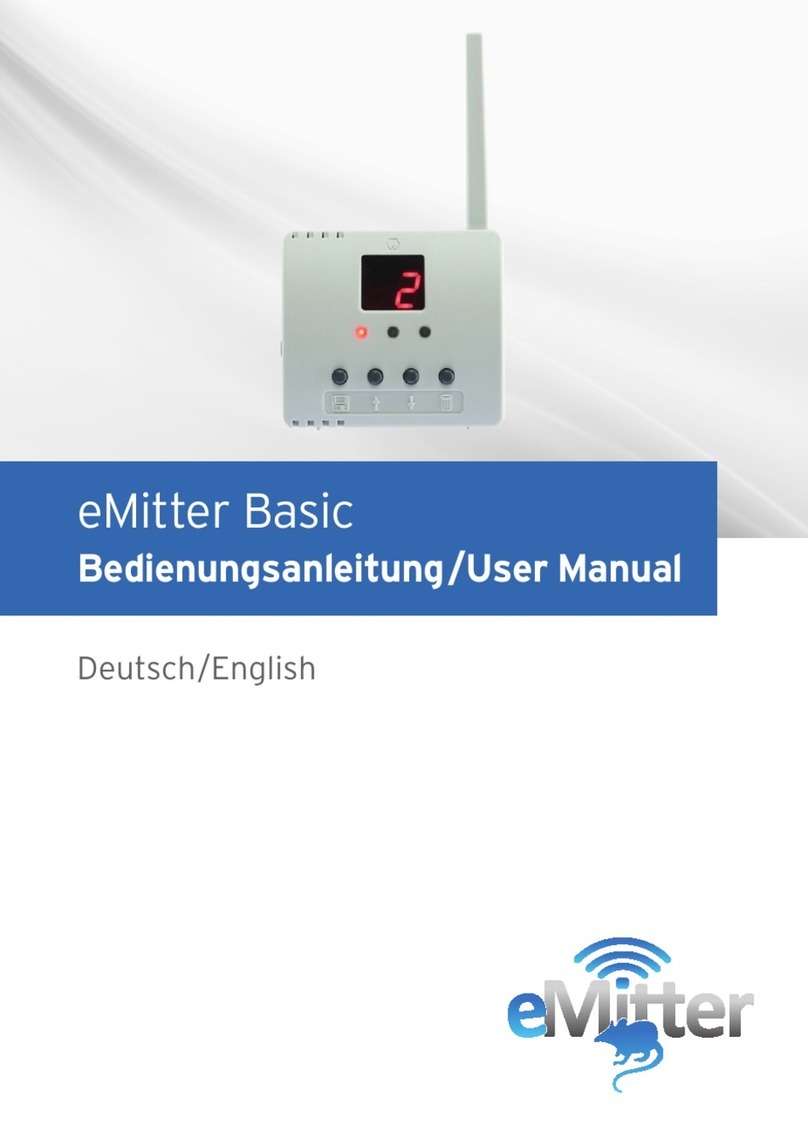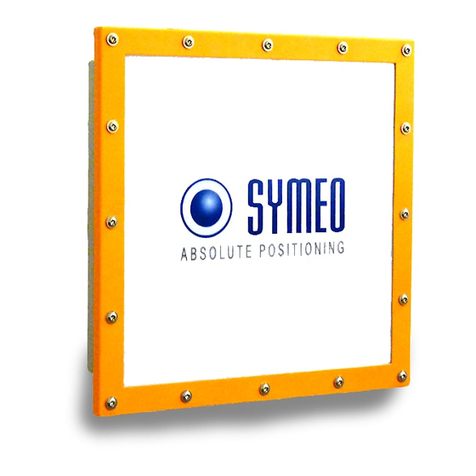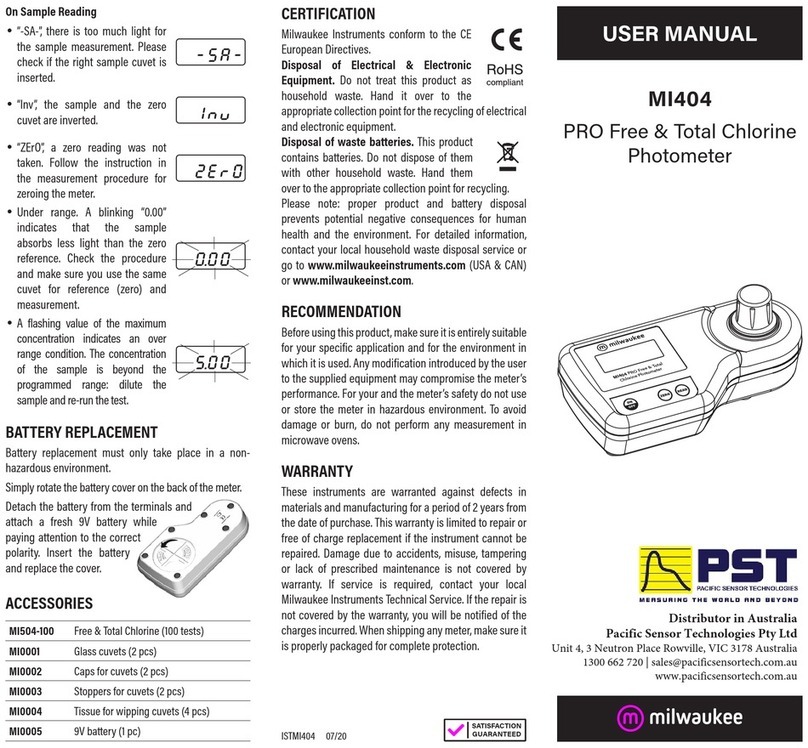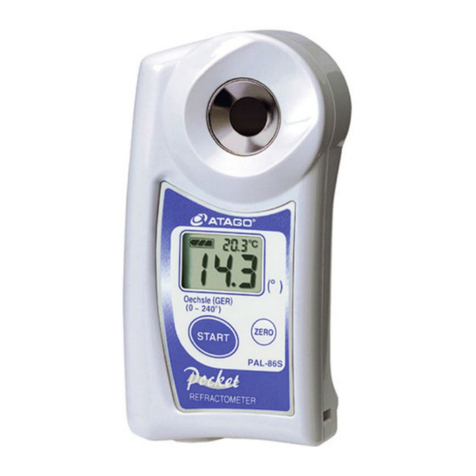Leader Electronics Corp. LCR-740 User manual

9002
1
K(M)S]
LEADER
LCR
BRIDGE
INSTRUCTION
MANUAL
LEADER
ELECTRONICS
CORP.
2-6-33
TSUNASHIMA-HIGASHI,
KOHOKU-KU,
YOKOHAMA,
JAPAN.
PHONE:
(045)
541-2123
FAX:(045)544-1280
TELEX:J47780
JPLEADER
_
LEADER
INSTRUMENTS
CORP
380
OSER
AVENUE,
HAUPPAUGE,
N.
Y.
11788
U.S.
A.
PHONE:
(516)231-6900
TELEX:510-227-9669
LEADER
HAUP
FAX:
516-231-5295
Printed
in
Japan.
LEADER
ELECTRONICS
CORP.

CONTENTS
SECTION
PAGE
1.
DESCRIPTION
1.1
General
.....
j
1.2
Specifications
......
i
1.3
Controls
and
Connectors
.
3
2.
OPERATION
2.1
Precautions
in
Use
...
6
2.2
Readout
of
Measured
Values
.
7
2.3
Use
of
“1.00”
Setting
of
NORMAL
switch
.
7
2.4
Resistance
(DC)
Measurements
.
g
2.5
Capacitance
Measurements
.
10
2.6
Inductance
Measurements
.
11
2.7
Measurement
of
Residuals
.
16
2.7.1
Residual
Resistance
.
16
2.7.2
Residual
Inductance
.
16
2.7.3
Residual
Capacitance
.
17
2.8
Use
of
External
Measuring
Sources
.
17
2.8.1
General
.
17
2.8.2
DC
Resistance
Measurements
.
lg
2.8.3
C
and
L
Measurements
....
19
2.8.4
Determination
of
D
and
Q
.
22
2.9
Measurement
of
Large
Capacitances
.
22
2.10
Other
Applications
.
22
2.10.1
Transformer
Measurements
.
22
2.10.2
Tolerance,
or
Error,
Measurements
.
23
2.11
Battery
Replacement
.
24

OPERATING
INSTRUCTIONS
3.
PRINCIPLE
OF
OPERATION
3.1
Bridge
Circuits
.
24
3.2
Bridge
Sources
.
26
3.3
Null
Detection
.
27
SCHEMATIC
DIAGRAM
SECTION
1
DESCRIPTION
1.1
General
The
LCR-740
is
designed
for
measurements
of
resistance
(R),capacitance
(C)
and
inductance
(L)
over
a
wide
range.
The
instrument
is
completely
self-contained,
including
a
battery
for
measurements
of
R
(DC);
as
well
as,
C
and
L
with
a
1kHz
oscillator
and
null
detecting
amplifier
system.
A
3-digit
readout
is
used
for
measured
values.
Input
connections
are
provided
for
use
ol
external
DC
or
AC
(50Hz
to
40kHz)
sources,
and
for
an
AC
Adapter
(LPS-169).
1.2
Specifications
Resistance
Measurement
Range
Minimum
Resolution
Accuracy
(at
20°
±5°C)
0.00112
to
11M12
in
eight
ranges
with
+10%
extension
at
each
range.
Iml2
(0.00112)
Range:
112
to
I
00kl2
±(0.5%+0.1%
f.s.)
1M12
±(1%+0.1%
f.s.)
0.112
±(2%+0.1%
f.s.)
Residual
Terminal
Resistance
Approx.
3ml2
Capacitance
Measurement
Range
lpF
to
11,000/iF
in
eight
ranges
with
+10%
extension
at
each
range.
1

Minimum
Resolution
lpF.
Accuracy
Range:
lOOOpF
to
lOO/iF
(at
20°
±5°C)
±(0.5%+
0.1%
f.s.)
lOOpF
±(1%+
0.1%
£s.)
IOOOmF
±(3%
+
0.1%
f.s.)
Residual
Terminal
Capacitance
Approx.
3pF
Inductance
Measurement
Range
0.1/zH
to
1100H
in
eight
ranges
with
+10%
extension
at
each
range.
Minimum
Resolution
0.1/rH
Accuracy
Range:
1
00/UH
to
1
OH
(at
20°
±5°C)
±(0.5%
+0.1%
f.s.)
100H
±(1%
+0.1%
f.s.)
IOjuH
±(3%
+0.1%
f.s.)
Residual
Terminal
Inductance
Approx.
0.3/UH
Dissipation
Factor
(D)
and
Quality
Factor
(Q)
Measurements
Range
0.01
to
30,
at
1kHz,
in
two
ranges.
Accuracy
+10%
+3
scale
divisions
Measuring
Sources
DC:
Internal
or
external
for
resistance
measurements.
AC:
Internal
1kHz,
or
external
50Hz
to
40kHz,
for
capacitance
and
inductance
measurements.
2
Power
Supply
9V
DC
(006P,
NEDA
1604,
or
equivalent).
Size
and
Weight
240(W)
X
85(H)
X
170(D)
mm;
approx.
2kg.
Accessory
supplied
Earphone.
1
9V
battery
.
1
Mini-plug-clip
cable.
1
Option,
Separate
Order
AC
adapter,
LPS-169.
Operating
Temp.
Range
0
to
40°C
Operating
Humidity
Range
0
to
85%
1.3
Controls
and
Connectors
A.
Front
Panel,
Fig.
1-1
(T)
POWER
switch
and
SENSITIVITY
control:
Power
switch
turns
unit
on
or
off,
and
sets
detector
sensitivity
for
A.C.
measurements.
(2)
R
C
L
indicator:
3-digit
display
controlled
by
knob
rotation;
actual
values
depend
on
settings
of
the
RANGE
MULTIPLIER
switches.
3

©)
Lock
knob:
For
locking
the
R
C
L
indicator,
(2),
at
a
predetermined
setting
when
testing
components
for
tolerance,
etc.;
normally
set
at
the
right,
or
“free”,
position.
(4)
NORMAL+1.00
switch:
Set
at
NORMAL
in
general
measure¬
ments
for
direct
readout
of
R
C
L
indication;
+1.00
setting
used
when
extending
the
upper
measuring
limit.
(D
RANGE
MULTIPLIER
switches:
For
selecting
the
ranges
of
components
under
measurement.
(6)
SELECTOR
switch:
To
be
set
at
R,
C,
or
L
(resistance,
capacitance,
or
inductance,
respectively)
depending
on
the
component
to
be
measured.
©
NULL
indicator:
10-0-10
scale
used
for
DC
resistance
measurements
and
0-10
scale
(at
right
of
0)
for
capacitance
and
inductance
measurements.
(©
Mechanical
zero
adjust
for
NULL
indicator.
(
9
)
D.
Q
dial:
With
two
scales,
outer
for
dissipation
factor,
D,
and
inner
for
Rg
(equivalent
series
resistance)
calibrated
for
values
at
1kHz.
But
actual
equivalent
series
resistance
must
be
calculated
through
2.5
or
2.6
on
page
10
and
page
11.
(©
XI
—
X10
switch:
Selects
the
multiplier
for
the
D
and
Rg
readings
on
the
D,
Q
dial.
(ll)
SOURCE
switch:
Selects
the
internal
bridge
operating
source,
DC
for
DC
resistance
measurements
and
AC
at
1kHz
for
resistance,
capacitance
and
inductance
measurements.
©
RED
HI
\
__
)
For
connections
to
the
unknown
(©
BLUE
EXT.
+DC
/
component
under
measurement;
both
are
“floating”
terminals
from
ground.
©
BLACK
terminal:
For
grounding
to
the
case.
4
B.
Rear
Side
of
Case,
Fig.
1-2
©
©
Fig.
1-2
Rear
side
of
case.
©
Cover
fastener
for
the
battery
compartment.
(©)
Carrying
handle.
C.
Front
Side
of
Case,
Fig.
1-3
Fig.
1-3
Front
side
of
case.
(jj(i
(f§)
(l|)
(©
EXT.
SIG.
IN
jack:
For
external
AC
source
in
50Hz
to
40kHz
range;
insertion
of
the
mini-plug
(on
connecting
cord)
auto¬
matically
turns
off
the
internal
1kHz
oscillator.
(O)
PHONE
jack:
For
insertion
of
the
earphone
plug
when
using
audible
signals
in
common
with
meter
indication
for
null
5

condition;
connection
to
a
scope
is
possible
for
the
same
purpose.
(19)
EXT.
PWR
IN
jack:
For
connection
to
the
LPS-169
AC
Adapter;
when
inserted,
the
internal
battery
is
turned
off
automatically.
SECTION
2
OPERATION
2.1
P
recautions
in
Use
A.
Always
set
the
POWER
switch
at
OFF
during
standby
periods,
or
when
the
bridge
is
not
in
use.
This
will
prolong
the
internal
battery
life.
(Use
of
the
AC
adapter,
LPS-169,
is
recommended,
where
applicable.)
B.
Check
the
center
0
setting
of
the
NULL
meter;
this
will
prevent
errors
in
DC
resistance
measurements.
If
off,
set
the
POWER
switch
at
OFF
and
adjust
the
center
screw,
if
necessary
see
figure.
C.
C
onnections
of
the
unknown
component
to
the
measuring
terminals,
RED
and
BLUE,
must
be
as
short
as
possible.
This
is
very
important
when
small
values
are
under
measurement.
D-
When
the
R
C
L
indicator
knob
is
locked
by
Lock
Knob,
do
not
force
rotation.
E.
The
specified
AC
adapter
is
the
LPS-169;
do
not
use
any
other
type.
6
2.2
R
eadout
of
Measured
Values
When
the
bridge
has
been
balanced
with
the
R
C
L
indicator
and
RANGE
MULTIPLIER
settings,
the
readout
is
made
as
described
in
the
examples
given
below.
IMPORTANT!!
NORMAL
+1.00
switch
setting
at
“NORMAL”.
RANGE
MULTIPLIER
RCL
Indication
MEASURED
VALUE
100£2
6.85
685S2
(=100
X6.85)
R
10
k
6.85
68.5kf2
(=
10X6.85)
100
kf
2
6.85
685kf2
(=100X6.85)
lOOpF
0.68
68
pF
(=100X0.68)
C
0.1/uF
6.85
0.685/tF
(=0.1
X
6.85)
10/uF
6.85
68.5/uF
(=10
X6.85)
10
mH
0.68
6
.
8
juH
(=10X0.68)
L
lOmH
6.85
68.5mH
(=10
X
0.685)
10H
6.85
68.5H
(=10X6.85)
NOTE:
The
RANGE
MULTIPLIER
should
be
set,
whenever
possible,
so
that
the
null
point
is
at
three
significant
figures
in
the
indication.
2.3
U
se
of
“+1.00”
Setting
of
NORMAL
Switch
In
general
measurements,
this
switch
is
set
at
NORMAL.
However,
when
measuring
at
the
higher
end,
i.e.,
above
the
9.99
indication
in
a
given
multiplier
range,
it
is
possible
to
extend
the
range
by
10
%.
This
is
done
by
rotating
the
indicator
knob
to
9.00
and
setting
the
switch
at
+
1
.
00
.
7

The
readings
will
then
start
from
9.00
to
0.00
although
the
values
will
be
from
10.00
up
to
11.00
(by
adding
“1.00”
to
the
readings).
Examples
are
given
in
the
table
which
follows.
At
“+1.00”
setting
of
the
NORMAL
switch
READING
MEASURED
VALUE
9.00
10.00
(=9.00+
1.00)
9.01
10.01
9.50
10.50
9.99
10.99
0.00
11.00
(=10.00+
1.00)
After
use
of
the
“+1.00”
setting,
always
reset
the
switch
to
NORMAL.
This
is
to
prevent
errors
in
subsequent
measurements
since
“1.00”
will
be
added
to
the
first
significant
figure,
for
example,
5.55
will
be
indicated
when
the
actual
value
is
6.55.
2.4
Resistance
(DC)
Measurements
1.
Connect
the
unknown
component
to
RJED
and
BLUE
terminals.
2.
Switch
settings:
SELECTOR
at
“R”,
see
figure.
R
C
L
SOURCE
at
DC/R,
see
figure.
_
SOURCE
AC
m
Hill
1
DC
R.C.L
ul
Hill
J
R
NORMAL
+1.00
at
NORMAL.
POWER
switched
at
ON.
(Note:
The
control
is
not
used
in
DC
measurements.)
RANGE
MULTIPLIER
at
the
range
to
be
used,
if
not
known,
note
the
NULL
meter.
Set
at
a
higher
range
if
the
pointer
swings
to
the
right
and
vice
versa.
3.
Rotate
the
RCL
knob
until
the
NULL
meter
indicates
at
center
0.
If
necessary,
alter
the
RANGE
MULTIPLIER
sett¬
ing.
4.
Read
the
RCL
indication
and
apply
the
range
multiplier
in
use
for
the
resistance
value.
(For
readouts,
etc.,
see
Sect.
2.2
and
2.3.)
NOTES:
A.
When
using
the
1ML2
range,
the
null
indication
may
not
be
well-defined;
in
this
case,
refer
to
Sect.
2.8.2.
Alternatively,
if
the
resistor
or
device,
under
measurement
is
non-inductive,
the
internal
AC
(1kHz)
source
may
be
used;
see
Sect.
2.6.
The
only
changes
are
that
the
SELECTOR
switch
is
set
at
“R”
and
the
SOURCE
switch
setting
is
at
AC/R.C.L.
B.
At
measurements
in
the
0.1
£2
range,
the
residual
terminal
resistance
must
be
taken
into
account,
see
Sect.
2.7.1.
8
9

2.5
Capacitance
Measurements
1.
C
ontrol
settings:
SELECTOR
switch
at
“C”,
see
figure.
SOURCE
switch
at
AC/R.C.L.
D.Q,
dial
at
0.
D,
Q
switch
at
X1.
NORMAL
+1.00
switch
at
NORMAL.
POWER
switched
to
ON.
SENSITIVITY
control
adjusted
for
NULL
meter
reading
at
“5”
2.
Connect
the
unknown
component
to
RED
and
BLUE
termi¬
nals.
3.
Adjust
RANGE
MULTIPLIER
switches
and
RCL
knob
for
minimum
pointer
swing,
i.e.,
at
or
towards
0.
4.
Adjust
the
D,
Q
dial
and
note
the
null
condition;
adjust
the
SENSITIVITY
control
if
necessary.
5.
Readjust
the
RCL
knob
and
D,
Q
dial
for
the
best
null
indication.
If
the
dial
setting
is
around
3.0,
set
the
D,
Q
switch
at
X10.
6
.
Readouts:
Capacitance
=
(RANGE
MULTIPLIER)
X
(RCL
indication);
also
see
Sect.
2.2.
and
2.3.
—
10
—
Dissipation
factor,
D,
at
1kHz:
Direct
from
the
dial;
multiply
by
10
if
the
D,
Q
switch
is
at
X10.
Equivalent
series
resistance,
Rs:
The
value
is
calculated
from
the
relation
—
Rs,
in
12
=
_*1_
=
RE
X
1Ql>
QrF
CpF
where
RE
is
the
dial
reading.
NOTES:
A.
Good
capacitors
will
have
very
low
D
and
vice
versa.
B.
At
measurements
up
to
lOOOpF,
the
residual
terminal
capacitance
must
be
taken
into
account,
see
Sect.
2.7.3.
C.
For
measurements
of
large
capacitances
(electrolytics,
polarized,
etc.)
see
Sect.
2.9.
2.6
Inductance
Measurements
1.
Control
settings
Power
switch:
OFF
Selector
switch:
L
Source
switch:
AC
SOURCE
-
11
—

DQ
x
1
—
x
10
switch:
xl
Normal
—+1.00
switch:
Normal
Range
multiplier
switch:
lOmH
DQ
dial:
Approximately
at
center
(Q=about
0.3)
RCL
digital
dial:
Near
5.00
2.
Connect
the
unknown
component
between
the
red
terminal
(HI)
and
blue
terminal
(EXT+DC).
3.
Rotate
the
knob
of
SENSITIVITY
clockwise
slowly.
Turn
the
unit
on
and
adjust
so
as
to
have
the
meter
needle
moved
to
the
right
from
NULL
point
and
pointed
between
6
and
7.
(This
is
very
critical.)
4.
Select
a
measurement
range
by
the
following
procedures
prior
to
start
measurement
of
a
completely
unknown
L.
However,
if
the
component
under
test
is
known
about
its
inductance,
select
a
range
multiplier
and
RCL
dial
corresponding
to
the
known
value.
(a)
Rotate
DQ
dial,
and
locate
a
point
where
clear
dip
takes
place
while
turning.
In
the
case
of
Q
of
which
L
is
low,
care
should
be
exer¬
cised
not
to
overlook
such
a
point
as
it
is
shallow.
DQ
dial
or
digital
dial
While
DQ
dial
is
turned
in
the
same
direction,
the
meter
needle
approaches
to
NULL
once,
and
then
sway
back
to
the
right.
At
this
time,
the
point
where
the
needle
comes
closest
to
the
NULL
point
is
^called
as
the
dip
points.
Although
the
indicator
needle
approaches
to
NULL,
DQ
dial
finally
comes
to
zero
(rotated
counterclockwise
to
its
extreme
point)
without
showing
the
dip
point.
In
such
a
case
select
other
range
by
pushing
range
switch,
and
try
to
locate
the
dip
point
in
the
same
manner.
(b)
In
case
the
dip
point
cannot
be
located
even
if
DQ
dial
is
rotated
fully
clockwise
^
,
set
the
XI
—
XI0
switch
at
XI0
and
try
to
locate
a
point.
When
a
dip
point
cannot
still
found,
select
other
range
by
pushing
range
switch,
and
try
to
locate
the
dip
point.
At
this
time,
try
to
find
such
a
point
while
adjusting
the
SENSITIVITY
knob
so
as
to
have
the
indicator
needle
pointed
around
between
6
and
7
in
the
right
hand
side.
If
such
a
point
can
never
be
found,
check
the
unit
if'
its
wire
is
broken
by
measuring
DC
resistance
at
R
^
range.
^
—
12
—
—
13
—

5.
When
the
dip
point
can
be
found,
take
following
steps.
Set
the
DQ
dial
at
the
point
where
the
largest
dip
takes
place.
Then
rotate
the
RCL
digital
dial
to
find
the
point
where
the
largest
dip
occurs.
(At
this
time,
try
to
find
a
dip
point
while
adjusting
the
SEN¬
SITIVITY
knob
so
as
to
have
the
indicator
needle
pointed
around
between
6
and
7
in
the
right
hand
side.)
6
.
In
the
same
manner,
locate
the
dip
point
by
turning
DQ
dial
and
RCL
dial
alternately.
Caution
(a)
It
is
impossible
to
make
measurement
of
inductance
when
DQ
dial
becomes
almost
zero
after
being
rotated
counter¬
clockwise^!.
This
is
because
that
DC
resistance
compo¬
nent
of
the
inductance
under
test
is
too
large,
or
Q
of
coil
is
less
than
0.1,
the
measuring
limit
of
this
instrument,
due
to
the
core
is
too
low
in
Q
at
a
measuring
frequency
(this
instrument
is
1kHz).
On
the
contrary,
if
DQ
dial
comes
to
almost
its
extreme
end
being
rotated
clockwise
even
if
XI
—
X10
switch
is
set
at
X10,
it
is
due
to
the
fact
that
Q
is
larger
than
30
and
outside
the
measuring
range.
In
such
a
case,
add
a
resistor
of
several
ohms
to
several
tens
ohms
to
the
inductor
to
be
measured
in
series
to
have
Q
reduced
to
less
than
30
and
make
measurement.
But
a
resistance
must
be
the
lowest
as
possible
to
bring
“Q”
to
be
within
30.
(Ferrite
core
etc.
are
about
100
to
200
in
Q.)
A
true
Q
can
be
obtained
from
a
measuring
fre¬
quency
f
and
a
measured
value
by
using
the
following
formula:
For
instance,
from
Q
R
and
L
to
be
obtained
when
resistor
R
is
added
in
series;
L
=
240mH,
Q
R
=
13.5,
R
=
100f2,
f
=
1kHz
—
14
—
1
=
128.87
1
_1_
R
~
1
100
QR
27tfL
13.5
“
27T
x
1
x
10
3
x
240
x
10"
3
(b)
If
RCL
digital
dial
indicates
less
than
0.99,
select
a
range
one
step
lower,
or
if
it
indicates
9.99,
select
a
range
one
step
higher
by
push
button,
and
make
readjustment
of
the
unit.
(Attention
is
paid
if
dial
exceeds
9.99,
it
becomes
0
.
00
.)
7.
Further
try
to
locate
the
point
where
the
largest
dip
takes
place
by
turning
DQ
dial
and
RCL
digital
dial
alternately.
At
this
time,
the
sensitivity
knob
is
slowly
turned
to
increase,
and
try
to
find
out
a
sharp
dip
point.
A
further
final
dip
point
should
be
located
by
the
following
procedures.
(a)
Hold
the
outer
edge
of
disk
of
DQ
dial
and
rotate
it
clockwise
by
1
to
2mm,
and
try
to
find
the
dip
point
by
finely
adjusting
RCL
digital
dial.
At
this
time,
if
such
the
dip
point
tends
to
become
shallower
than
the
previous
condition
(needle
sways
to
the
right
from
null
point),
rotate
DQ
dial
in
reverse
direction
by
about
1
to
2mm
and
cause
the
needle
to
dip
by
adjusting
the
digital
dial.
(b)
When
the
needle
is
adjusted
to
dip
further,
rotate
DQ
dial
further
in
the
direction
where
needle
dips
more
by
about
1
to
2mm,
and
then
try
carefully
to
find
a
point
where
the
largest.
8
.
Equivalent
series
resistance,
Rs:
The
value
is
calculated
from
the
relation—
Rs,
in
£2
=
L
in
henrys
x
1CT
6
L
in
mH
x
10"
where
RE
is
the
dial
reading.
-
15

9.
If
an
inductor
to
be
measured
is
of
iron
core
type,
it
has
B/H
characteristic,
therefore,
measured
values
will
be
varied
depend
on
measuring
conditions.
Please
refer
to
Par.
5-6-3,
Measure¬
ment
with
external
oscillator
used.
2.7
Measurement
of
Residuals
For
accurate
measurements,
the
residual
terminal
values
at
the
O.m,
lOOpF,
and
IOjliH.
For
accurate
measurements
at
the
lowest
ranges,
0.112,
lOOpF,
and
10/rH,
it
is
necessary
that
the
residual
terminal
values
are
known.
The
procedures
are
given
below.
2.7.1
Residual
Resistance
1.
Control
settings:
RANGE
MULTIPLIER
switch
at
0.112.
SELECTOR
switch
at
“R”.
SOURCE
switch
at
AC/R.C.L.
SENSITIVITY
control
at
full
clockwise.
D,
Q
dial
at
0.
2.
Short
the
RED
and
BLUE
terminals
with
heavy
wire,
or
metal
strap;
if
leads
are
to
be
used,
short
the
free
ends.
3.
Adjust
the
RCL
knob
for
the
null
condition
and
read
the
indicator.
The
indicated
value
should
be
subtracted
from
the
value
measured
under
the
conditions
given
in
Sect.
2.4.
Example:
Residual
resistance
0.00212
(Indication
=0.02).
Measured
unknown
0.0512.
Actual
resistance
0.498
(=0.500
—0.002).
2.7.2
Residual
Inductance
The
same
procedure,
using
shorted
terminals,
as
given
in
Sect.
2.7.1
is
used
with
exception
of
the
following:
—
16
—
RANGE
MULTIPLIER
Switch
at
1
OjuH.
SELECTOR
switch
at
“L”.
The
indicated
value
should
be
subtracted
from
the
value
measured
at
the
10/rH
and
lOOpH
settings
of
RANGE
MULTIPLIER.
Example:
Residual
inductance
0.1
6pH.
Measured
unknown
25.4/aH.
Actual
inductance
25.24
/jH
(25.4
—
0.16).
2.7.3
R
esidual
Capacitance
1.
Remove
connections,
if
any,
across
the
RED
and
BLUE
terminals,
i.e.,
the
circuit
must
be
“open”.
2.
Control
settings:
RANGE
MULTIPLIER
switch
at
lOOpF.
SELECTOR
switch
at
“C”.
SOURCE
switch
at
AC/R.C.L.
SENSITIVITY
control
at
full
clockwise.
D,
Q
dial
at
0.
3.
Adjust
the
RCL
knob
for
the
null
condition
and
read
the
indicator.
The
indicated
value
should
be
subtracted
from
the
value
measured
at
the
lOOpF
and
lOOOpF
settings
of
RANGE
MULITPLIER.
Example:
Residual
capacitance
2pF.
Measured
unknown
150pF.
Actual
capacitance
148pF
(150
—
2).
2.8
Use
of
External
Measuring
Sources
2.8.1
General
Procedures
with
use
of
external
sources
for
measurement
of
DC
resistance
and
for
capacitance
and
inductance
are
given
in
this
section.
-
17
-

For
the
C
and
L
measurements,
the
frequency
range
is
from
50Hz
to
40kHz.
The
generator
should
have
a
sine
wave
output
at
1
to
5Vrms
into
approximately
5kf2.
2.8.2
DC
Resistance
Measurements
When
measuring
the
DC
resistance
of
unknowns
at
high
values
with
the
internal
battery
source,
the
null
indication
may
not
be
well-defined.
In
this
case,
an
external
DC
source
can
be
used.
IMPORTANT!!
a.
Set
the
high
voltage
input
at
off
when
making
lead
connections.
b.
Take
care
not
to
come
into
contact
with
the
high
voltages.
c.
The
protective
resistor
must
always
be
used
at
the
input
circuit.
d.
Turn
off
the
DC
input
when
changing
the
RANGE
MULTIPLIER
settings;
confirm
that
the
proper
voltage
and
range
are
being
used,
otherwise
there
is
danger
of
damaging
the
internal
circuit
com¬
ponents.
1.
Set
the
POWER
switch
(SENSITIVITY
control
knob)
at
off.
2.
Set
the
external
DC
supply
at
off.
3.
Connect
the
negative
lead
to
the
BLACK
terminal,
and
the
positive
lead
to
the
BLUE
(EXT.
+DC)
terminal,
see
figure.
4.
Connect
the
unknown
across
the
RED
and
BLUE
terminals.
5.
Rotate
the
RCL
knob
and
read
the
indicator.
Apply
the
proper
multiplier;
also
see
Sect.
2.2
and
2.3.
—
18
—
NO
IE:
I
he
DC
voltages
to
be
used
depend
on
the
RANGE
MULTIPLIER
settings
as
given
in
the
table
which
follows.
RANGE
MULTIPLIER
SETTING
lkS2
10k£2
lOOkfl
lMf2
Maximum
DC
Input
30V
70V
220V
500V
lkfi
10
kS
2
lOOkfi
1MJ2
30V
70V
220V
500V
G
o
00
r—1
A
>
2
.
2
kf
2
>27kf2
>56kf2
2.8.3
C
and
L
Measurements
A.
Measuring
Procedure
1.
Input
Connections:
The
generator
output,
using
the
accessory
connecting
cord,
is
connected
to
the
EXT.
SIG.
IN
jack
at
the
front
side
of
the
case,
see
figure.
Note
that
a
1/LlF
capacitor
is
in
series
with
the
“hot”
lead.
—
19
—

2.
Set
the
SELECTOR
switch
at
“C”
or
“L”,
whichever
unknown
component
is
under
measurement.
3.
Set
the
SOURCE
switch
at
AC/R.C.L.
(When
the
external
input
is
connected,
the
internal
1kHz
source
is
cut
out
of
circuit.)
4.
Measurements
for
C
or
L
are
made
as
described
in
Sect.
2.5
and
2.6
respectively.
Adjust
the
controls
—
SENSITIVITY,
D,
Q
dial
and
RCL
indicator
—
and
RANGE
MULTIPLIER
switch
settings
as
required
for
the
null
condition.
5.
The
C
or
L
values
are
determined
by
the
RANGE
MULTIPLIER
setting
and
the
RCL
indicator.
B.
L
Measurements
(with
iron
core)
An
external
oscillator
is
used
when
it
is
desired
to
make
measurement
of
inductance
at
a
desired
frequency.
Especially
when
a
coil
with
iron
core
used
(power
transformer,
etc.)
is
measured,
its
inductance
will
by
varied
by
drive
voltage
of
an
oscillator
due
to
non-linearity
of
B/H
curve.
Also
it
varies
depend
on
frequency.
Generally
in
this
case,
inductance
at
the
time
when
drive
voltage
at
a
fixed
frequency
is
zero,
that
is
inductance
of
initial
perme¬
ability,
is
used
as
comparison.
Now,
to
obtain
this
value,
an
external
oscillator
is
used,
and
in¬
ductance
of
zero
voltage
is
to
be
obtained
by
plotting
voltages
applied
and
values
of
inductance.
(TO
OBTAIN
THIS
VALUE,
PLOT
L
VS
VOLTAGE
APPLIED
AND
EXTRAPOLATE
TO
ZERO
VOLTAGE)
In
the
case
of
material
of
which
Q
is
high
such
as
Ferrite
core
(Pressurized
powdered
iron
core;
oxide
magnetic
core
material),
there
is
no
substantial
variation
in
inductance
by
voltage
level
until
it
is
saturated.
1.
Connect
a
sine
wave
oscillator
of
50Hz
to
40kHz
to
EXT,
SIG.
In
terminals
as
shown
in
Fig.
2.
Set
the
frequency
of
the
sine
wave
oscillator
to
a
measuring
frequency,
and
set
its
output
voltage
at
3
Vrms.
3.
Connect
an
unknown
component
to
its
measuring
terminal.
4.
Subsequent
procedures
are
the
same
as
those
of
2.6.
—
20
—
—
21
—

2.8.4
Determination
of
D
and
Q
A.
For
Capacitance:
The
dissipation
factor
depends
on
the
frequency
and
is
calculated
from
the
relation
—
p
Dr
=
-X
D
1000
where
Dp
=
Dissipation
factor
Fj_j
2
=
Frequency
of
measurement
in
Flz
D
=
Reading
on
the
D,
Q
dial
(XI
or
X10)
B.
For
Inductance:
The
quality
factor
depends
on
the
frequency
and
is
calculated
from
the
relation
—
=
—^2—X
Q
1000
where
Qp
=
quality
factor
Fj_j
z
=
Frequency
of
measurement
in
Hz
Q
=
Reading
on
the
D,
Q
dial
(XI
or
X10)
2.9
Measurement
of
Large
Capacitances
Capacitors
with
high
capacitance,
mainly
used
in
filter
circuits,
usually
have
a
certain
amount
of
inductance.
In
order
to
minimize
the
inductive
effects,
measurements
should
be
made
at
a
low
frequency,
for
example
at
120Hz,
using
an
external
AC
source,
see
Sec.
2.8.3.
Since
the
AC
voltage
across
the
capacitor
is
low,
reliable
measurements
can
be
made
without
use
of
the
polarizing
(DC)
voltage.
2.10
Other
Applications
2.10.1
Transformer
Measurements
A.
Turns
Ratio
The
turns
ratio
between
different
windings
can
be
determined
—
22
—
by
measuring
the
inductance
of
the
windings
under
no
load
conditions.
The
ratio
is
determined
from
the
relation
—
T
=
where
T
=
turns
ratio,
L!
and
L
2
respectively
are
inductances
of
the
primary
and
secondary
windings.
B.
Leakage
Inductance
Since
most
of
the
flux
leakage
in
output
transformers
is
through
air,
the
leakage
inductance
can
be
measured
by
shorting
the
secondary
winding
and
measuring
the
inductance
from
the
primary
side
and
vice
versa.
(Low
leakage
measured
from
the
primary
side
indicates
the
extension
of
bandwidth
towards
the
higher
frequencies.)
2.10.2
Tolerance,
or
Error,
Measurements
When
a
large
number
of
components,
such
as
resistors,
must
be
checked
to
be
within
given
limits,
the
procedure
is
as
follows:
1.
Assume
that
the
resistors
are
being
checked
for
tolerance,
set
the
switches
for
“R”
measurements,
see
Sect.
4.
2.
Connect
the
“standard”
resistor
to
the
RED
and
BLUE
terminals.
3.
Adjust
the
SELECTOR
switch
setting
to
“R”,
and
SOURCE
switch
to
DC/R.
4.
Adjust
the
RCL
knob
for
null
indication
and
lock
the
setting.
5.
Set
the
“standard”
at,
say
+5%
and
—5%
of
the
initial
value.
Note
the
null
meter
readings
at
the
two
values
to
be
used
for
the
limits.
—
23
—

6
.
Remove
the
“standard”
and
connect
the
test
resistor
in
place
as
required
and
note
the
error
on
the
NULL
meter.
NOTES:
a.
This
process
is
applicable
when
testing
capacitors
and
coils
by
setting
the
SOURCE
switch
at
AC/R.C.L.
b.
Release
the
lock
on
the
RCL
indicator
knob
after
the
tests.
2.11
Battery
Replacement
The
internal
battery,
006P,
NEDA
1604,
or
equivalent,
should
be
replaced
when
the
1kHz
oscillator
is
inoperative.
This
condition
can
be
detected
when
the
meter
pointer
does
not
swing
when
the
SOURCE
switch
is
set
at
AC/R.C.L.
Pull
out
the
captive
fastener
on
the
compartment
cover
at
the
back
for
removal
and
installation,
see
figure.
FASTENER
SECTION
3
Principles
of
Operation
3.1
.
Bridge
Circuits
Three
basic
bridge
configurations
are
used
in
the
LCR-740.
The
circuit
elements
are
indicated
with
the
following
notation
—
Unknowns
under
measurement:
Rx
Resistor
Cx
Capacitor
Lx
Inductor
(coil)
In
bridge
arms:
Rs
Standard
resistance,
for
R
Cs
Standard
capacitance,
for
C
and
L
—
24
—
Rm
Range
multiplier
Rv
Variable
resistor,
with
RCL
indicator
D,
or
Q
Variable
resistor
for
dissipation
factor,
D,
and
Quality
factor
Q.
Sources
DC
Internal,
or
external
AC
Internal
(1kHz)
or
external
Detection
M
O-center
for
DC
resistance
DET
Amplifier
system
+
meter
A.
DC
resistance
bridge
The
conventional
Wheatstone
bridge
circuit
is
used,
where
Rm
X
Rv
Rx
=
-
Rs
B.
Capacitance
bridge
Capacitance
is
measured
with
the
series
bridge,
where
Rv
Cx
=
-Cs
Rm
—
25
—

C.
Inductance
bridge
The
Maxwell
bridge
is
used
for
inductance
measurements,
where
Lx
=
Rm
X
Rv
X
Cs
3.2
Bridge
Sources
The
internal
9V
battery
is
used
as
the
source
for
DC
resistance
measurements.
When
measuring
C
and
L,
the
signal
is
generated
with
a
two-transistor
oscillator
at
1kHz.
26
—
3.3
Null
Detection
DC
resistance:
The
0-center
meter
is
directly
connected
across
the
balanced
potential
points
in
the
bridge.
For
null
detection,
a
preamplifier
stage,
sensi¬
tivity
control,
and
output
amplifier
are
used.
The
output
signal
is
applied
to
a
rectifier
bridge
with
the
meter
in
circuit.
Since
the
detected
signal
is
unidirectional,
only
one-half
of
the
whole
sacle
is
used
in
the
meter.
-
27
—

Table of contents
Other Leader Electronics Corp. Measuring Instrument manuals
